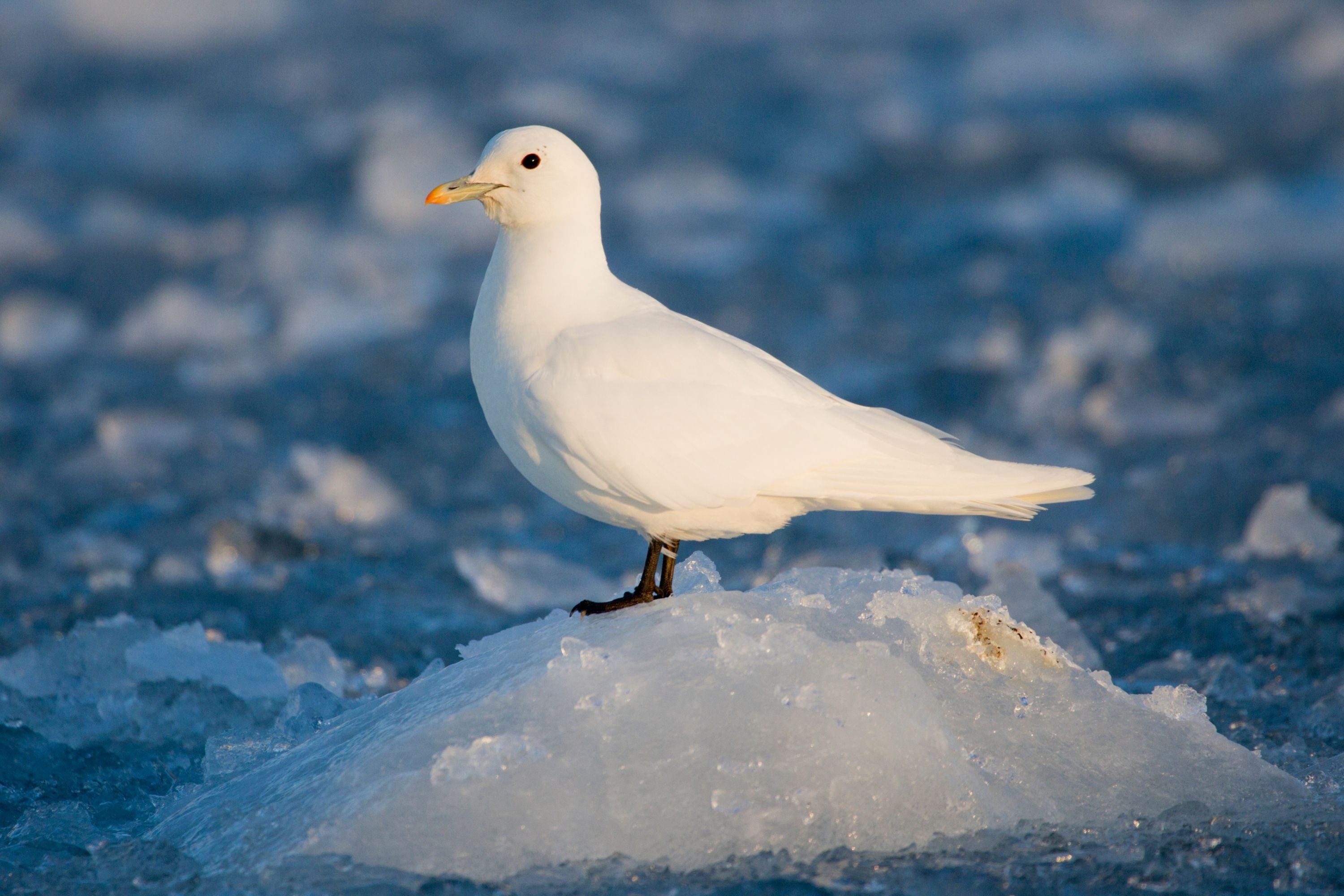Ivory gull
(Pagophila eburnea)

Description
The ivory gull (Pagophila eburnea) is a small gull, the only species in the genus Pagophila. It breeds in the high Arctic and has a circumpolar distribution through Greenland, northernmost North America, and Eurasia. This species is easy to identify. At approximately 43 centimetres (17 in), it has a different, more pigeon-like shape than the Larus gulls, but the adult has completely white plumage, lacking the grey back of other gulls. The thick bill is blue with a yellow tip, and the legs are black. The bill is tipped with red, and the eyes have a fleshy, bright red eye-ring in the breeding season. Its flight call cry is a harsh, tern-like keeeer. It has many other vocalizations, including a warbling "fox-call" that indicates potential predators such as an Arctic fox, polar bear, Glaucous Gull or human near a nest, a "long-call" given with wrists out, elongated neck and downward-pointed bill, given in elaborate display to other Ivories during breeding, and a plaintive begging call. given in courtship by females to males, accompanied by head-tossing. Young birds have a dusky face and variable amounts of black flecking in the wings and tail. The juveniles take two years to attain full adult plumage. There are no differences in appearance across the species’ geographic range. Length: 15.8–16.9 in (40–43 cm) Weight: 15.8–24.2 oz (450–690 g) Wingspan: 42.5–47.2 in (108–120 cm) In North America, it only breeds in the Canadian Arctic. Seymour Island, Nunavut is home to the largest known breeding colony, while Ellesmere, Devon, Cornwallis, and north Baffin islands are known locations of breeding colonies. It is believed that there are other small breeding colonies of less than six birds that are still undiscovered. There are no records of the ivory gull breeding in Alaska. During the winter, ivory gulls live near polynyas, or a large area of open water surrounded by sea ice. North American birds, along with some from Greenland and Europe, winter along the 2000 km of ice edge stretching between 50° and 64° N from the Labrador Sea to Davis Strait that is bordered by Labrador and southwestern Greenland. Wintering gulls are often seen on the eastern coasts of Newfoundland and Labrador and occasionally appear on the north shore of the Gulf of St. Lawrence and the interior of Labrador. It also winters from October through June in the Bering Sea and Chukchi Seas. It is most widespread throughout the polynyas and pack ice of the Bering Sea.
Taxonomic tree:







